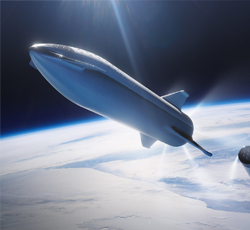
SpaceX’s powerful Falcon Heavy rocket has another date with space
- by Digital Trends
- Jul 20, 2022
- 0 Comments
- 0 Likes Flag 0 Of 5

— SpaceX (@SpaceX) July 19, 2022
SpaceX’s 70-meter-tall Falcon Heavy can be simply described as a larger version of SpaceX’s workhorse Falcon 9 rocket as it uses two Falcon 9 boosters strapped to the Falcon’s core booster, which is also a Falcon 9 rocket.
At liftoff the Falcon Heavy creates around 5 million pounds of thrust, equal to that of around 18 Boeing 747 aircraft. This is enough power to lift to space a weight equal to almost 64 metric tons (141,000 pounds), or as SpaceX puts it, “a mass greater than a 737 jetliner loaded with passengers, crew, luggage, and fuel.”
The vehicle has only flown three times to date. The first orbital launch took place in February 2018, sending into orbit a rather unusual test payload belonging to CEO Elon Musk.
The second mission took place in April 2019, carrying the Arabsat-6a communications satellite into orbit, while its third mission deployed the USAF STP-2 satellite for the U.S. Department of Defense in April 2019.
A number of other Falcon Heavy missions are already set to take place ahead of the Roman Space Telescope deployment. The next one, for example, is scheduled for September and will carry the ViaSat-2 communications satellite into orbit, while another in 2024 will deploy NASA’s Europa Clipper spacecraft to Europa, one of Jupiter’s icy moons.
Roman Space Telescope
With so much excitement surrounding the current James Webb Space Telescope mission, the Roman Space Telescope looks set to generate a similar amount of interest. The Roman mission will involve “dedicated investigations to tackle outstanding questions in cosmology, including the effects of dark energy and dark matter,” according to NASA. It will also pave the way for further studies of astrophysical phenomena.
Tantalizingly, it will also search for distant Earth-like planets that could host life of some form.
The space-based telescope was originally known as the Wide Field Infrared Survey Telescope (WFIRST), but was renamed in honor of Dr. Nancy Grace Roman for her groundbreaking work at NASA that helped to make large space telescopes a possibility.
To find out more about the Nancy Grace Roman Space Telescope mission, check out this informative Digital Trends article.
Please first to comment
Related Post
Stay Connected
Tweets by elonmuskTo get the latest tweets please make sure you are logged in on X on this browser.






 Energy
Energy


















